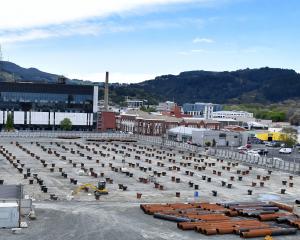

That was before I understood that it was policy causing a good amount of my business headaches and what a shemozzle bad policy could embed deep into society.
Take for example the Rogernomics reforms of the 1990s, which are still responsible for our country’s perception that manufacturing is a dirty manual "old school" job with blue-overalls-clad workers on the tools; a dying and unexciting industry with low wages and very few career pathways.
For a bunch of "old school tradies", we’ve done a good job of creating world-leading manufacturers: Fisher & Paykel, Fonterra, TASKA Prosthetics, Buckleys Electromagnets, Douglas Pharmaceuticals, Shotover Camera Systems and Scott Technology.
Not to mention being the fourth-largest player globally for number of space launches in 2022, thanks to Rocket Lab. Once you’ve had the rocket scientists design the rocket, it is the tradies that put it together.
Manufacturing employs 12% of New Zealand’s workforce, comprises 60% of exports and contributes 10% of GDP.
Under the new government, for the first time we have a minister for manufacturing, Andrew Bayly, who has presented the sector with a real opportunity to influence policy. He has formed the Manufacturing Productivity Advisory Group (MPAG), an independent group representing manufacturing across all sectors, scales, regions and demographics.
I’m very privileged to be the chairwoman of MPAG.
Contrary to well-intentioned innovation policy-makers’ beliefs, we all agree it’s not as simple as giving out grants for robots. It’s actually about perceptions. We are dealing with 30 years of bad publicity and policy settings that have driven talent and investment away.
The education policy is an easy example. Let’s start with the macro situation: high schools see an apprenticeship or polytech entrant as a literal loss. They lose funding if students leave at the end of year12, and they’re ranked nationally on university entrance. This is a massive disincentive for recommending vocational engineering and apprenticeship career pathways.
How that plays out in the micro sense: in my business we manufacture hundreds of components for aerospace, medical and electronics industries — very cool, very high-value stuff. We recently advertised for a CNC machining position and had 76 applicants: not a single one is a New Zealand resident. At the same time, we advertised for an administration manager: all 82 applicants were residents or citizens.
Non-management CNC machinists who reach the level of programmer in New Zealand are attracting a market rate of between $40-$50 per hour. There is no ceiling.
Instead, our education system has funnelled 41% of our kids into management, commerce, law, society and culture university degree programmes, 25% of whom move offshore because they can’t find jobs.
Where is the policy to ensure alignment of education to roles our economy actually needs, roles that will add to our productivity?
A lack of perception has also driven the development of a science, research and innovation system that invests in "new to world" novel innovation, with zero focus on the advanced manufacturing capabilities required to produce them.
We need to align our innovation policy with real productive commercial outcomes.
The procurement piece is even simpler. When we spend billions on foreign suppliers, why don’t we give weighting to local content? We are about to spend $1.5billion on a new hospital development — touted as one of four in the pipeline nationally. Where is the strategy to encourage investment into domestic capability? How can the government release contracts earlier to enable local suppliers to be bankable to "tool up" in response?
As for the Treasury and investment, no-one around the MPAG table is talking about grants. We’re wanting tax and financial facilities that are fit for purpose for manufacturing.
Process innovation projects aren’t as simple as flicking a switch. They require significant commissioning, testing, software integration and capability training.
New Zealand has one of the highest costs of capital in the OECD: globally, mechanisms such as accelerated depreciation, import GST deferrals, longer-term and interest-only upfront debt facilities are common.
We could align our procurement and financial settings with what industry needs to invest with confidence and get their productivity wheels turning.
In a nutshell, it has been misaligned policy that created this industry’s shemozzle in the first place. Policy takes time to get right. In the meantime, we need the government to help us improve the perception of the manufacturing sector. That will attract top talent, top talent will innovate processes. Process innovation will drive automation of tasks, freeing up capital for investment in advanced technology and ultimately making the sector more attractive and competitive globally.
If the government continues to listen, then as a business community we will continue to lean in.
- United Machinists chief executive Sarah Ramsay is also Advanced Manufacturing Aotearoa council chairwoman and a committee member for regional engineering collective SOREC. Both are not-for-profit advocacy organisations representing the manufacturing community.











